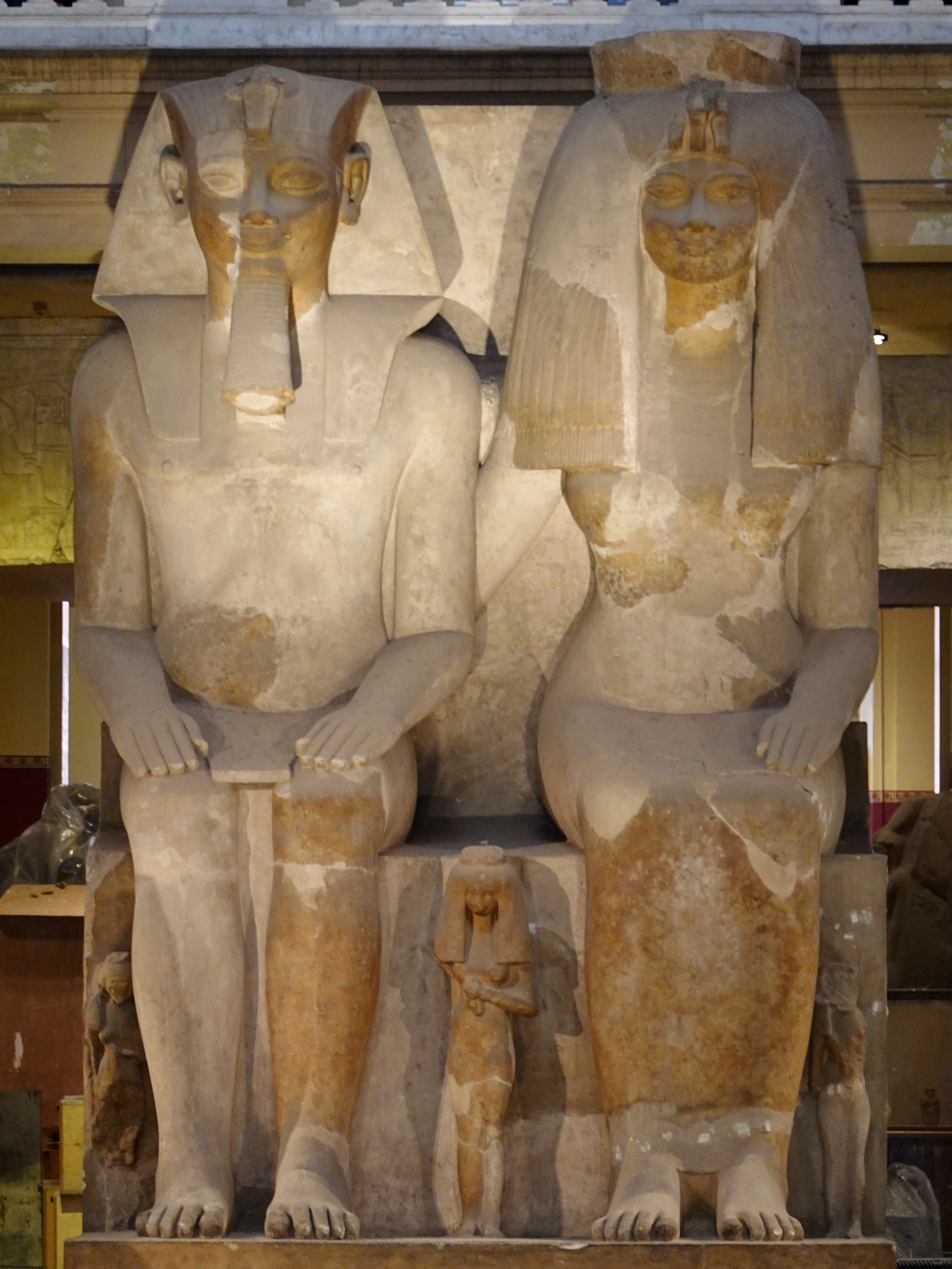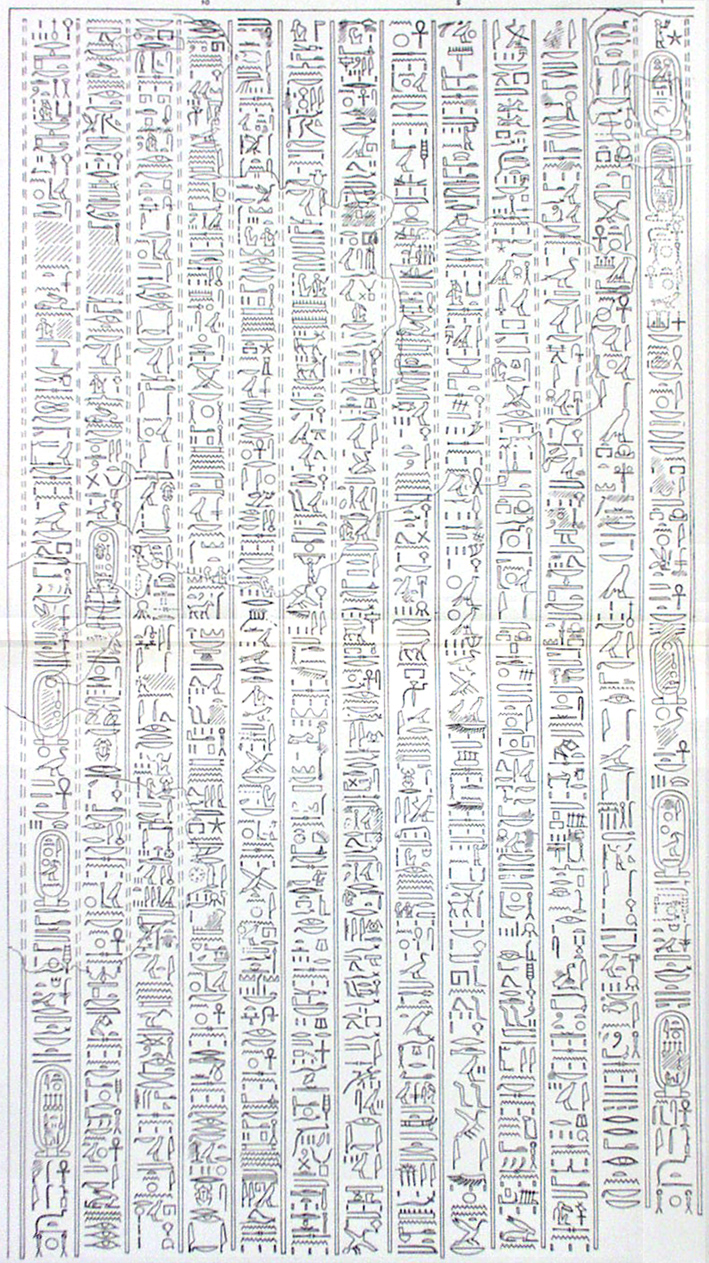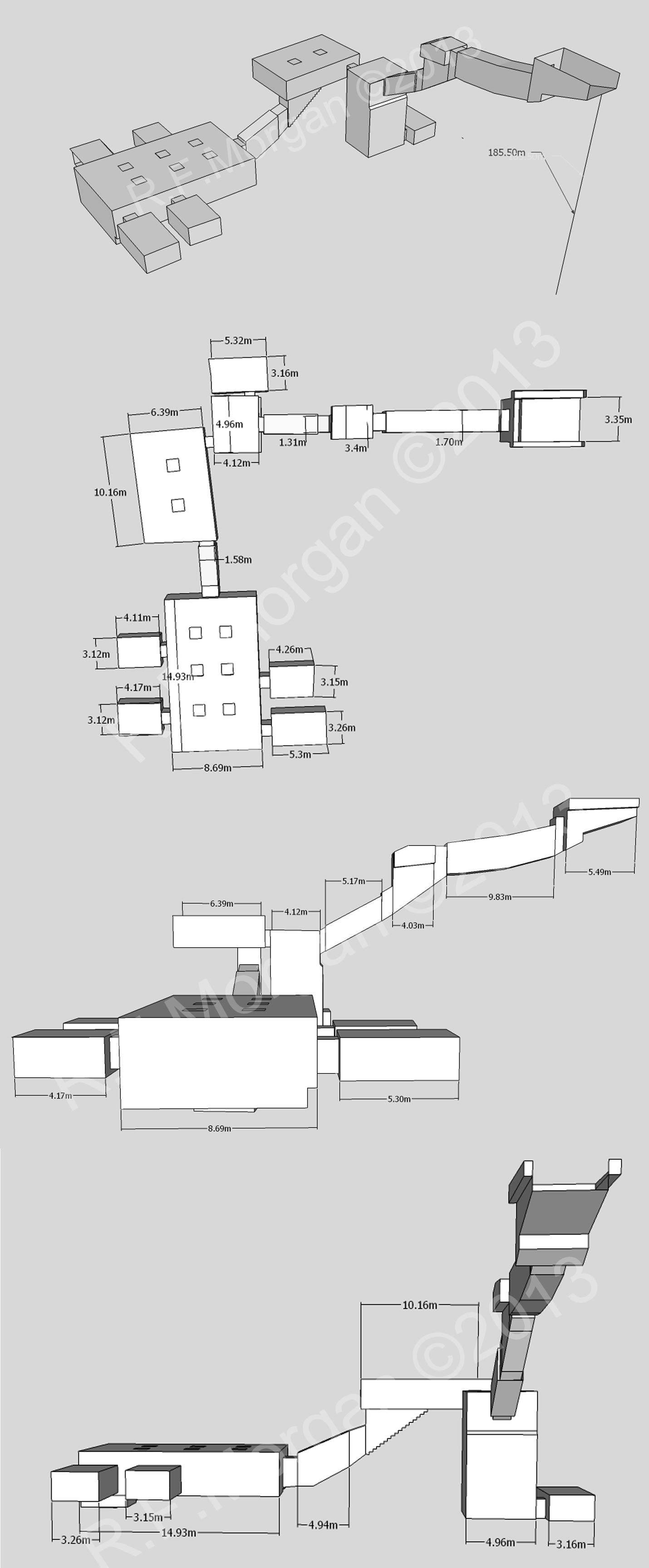|
Beketaten
Beketaten () (14th century BCE) was an ancient Egyptian princess of the 18th Dynasty. Beketaten is considered to be the youngest daughter of Pharaoh Amenhotep III and his Great Royal Wife Great Royal Wife, or alternatively, Chief King's Wife () is the title that was used to refer to the Queen consort, principal wife of the pharaoh of Ancient Egypt, who served many official functions. Description While most ancient Egyptians were ... Tiye, thus the sister of Pharaoh Akhenaten.Aidan Dodson & Dyan Hilton, The Complete Royal Families of Ancient Egypt, Thames & Hudson (2004), p.154 Her name means "Handmaid of Aten". Family Beketaten was most likely the youngest daughter of Amenhotep III and Tiye. This would mean their other children were her siblings, including Prince Thutmose, the Pharaoh Akhenaten, Sitamun, Isis, Henuttaneb, and Nebetah. Some scholars have speculated that Nebetah was identical with Beketaten. However, no evidence proves that they are the same person. ... [...More Info...] [...Related Items...] OR: [Wikipedia] [Google] [Baidu] |
Amenhotep III
Amenhotep III ( , ; "Amun is satisfied"), also known as Amenhotep the Magnificent or Amenhotep the Great and Hellenization, Hellenized as Amenophis III, was the ninth pharaoh of the Eighteenth Dynasty of Egypt, Eighteenth Dynasty. According to different authors following the "Low Chronology", he ruled New Kingdom of Egypt, Egypt from June 1386 to 1349 BC, or from June 1388 BC to December 1351 BC/1350 BC, after his father Thutmose IV died. Amenhotep was Thutmose's son by a minor wife, Mutemwiya. His reign was a period of unprecedented prosperity and splendour, when Egypt reached the peak of its artistic and international power, and as such he is considered one of ancient Egypt's greatest pharaohs. He is also one of the few pharaohs who was one of the few pharoahs who was List of pharaohs deified during lifetime, worshipped as a deity during his lifetime. When he died in the 38th or 39th year of his reign he was succeeded by his son Amenhotep IV, who later changed his name to Akhe ... [...More Info...] [...Related Items...] OR: [Wikipedia] [Google] [Baidu] |
Tiye
Tiye (c. 1398 BC – 1338 BC, also spelled Tye, Taia, Tiy and Tiyi) was the Great Royal Wife of the Egyptian pharaoh Amenhotep III, mother of pharaoh Akhenaten and grandmother of pharaoh Tutankhamun; her parents were Yuya and Thuya. In 2010, DNA analysis confirmed her as the mummy known as "The Elder Lady" found in the tomb of Amenhotep II (KV35) in 1898. Family and early life Tiye's father, Yuya, was a non-royal, wealthy landowner from the Upper Egyptian town of Akhmim, where he served as a priest and superintendent of oxen or commander of the chariotry. Tiye's mother, Thuya, was involved in many religious cults, as her different titles attested (''Singer of Hathor'', ''Chief of the Entertainers'' of both Amun and Min...), which suggests that she was a member of the royal family. Egyptologists have suggested that Tiye's father, Yuya, was of foreign origin due to the features of his mummy and the many different spellings of his name, which might imply it was a non-Egypt ... [...More Info...] [...Related Items...] OR: [Wikipedia] [Google] [Baidu] |
Kiya
Kiya was one of the wives of the Egyptian Pharaoh Akhenaten. Little is known about her, and her actions and roles are poorly documented in the historical record, in contrast to those of Akhenaten's 'Great royal wife', Nefertiti. Her unusual name suggests that she may originally have been a Mitanni princess.Reeves, C. Nicholas. ''New Light on Kiya from Texts in the British Museum'', p.100 The Journal of Egyptian Archaeology, Vol. 74 (1988) Surviving evidence demonstrates that Kiya was an important figure at Akhenaten's court during the middle years of his reign, when she had a daughter with him.William J. Murnane. ''Texts from the Amarna Period in Egypt.'' Edited by E.S. Meltzer. Atlanta: Society of Biblical Literature, 1995. () Page 9, pp 90–93, pp 210–211.Aidan Dodson. Amarna Sunset: Nefertiti, Tutankhamun, Ay, Horemheb, and the Egyptian Counter Reformation. The American University in Cairo Press, 2009. () Page 17. She disappears from history a few years before her royal hus ... [...More Info...] [...Related Items...] OR: [Wikipedia] [Google] [Baidu] |
Nebetah
Nebetah () was one of the daughters of ancient Egyptian pharaoh Amenhotep III of the 18th Dynasty and his Great Royal Wife Tiye. She was a younger sister of Akhenaten. Biography Nebetah's name means ''Lady of the Palace''. Her name, like that of her elder sister Henuttaneb was also frequently used as a title for queens. She was possibly one of the youngest of the royal couple's children, since she does not appear on monuments on which her elder sisters do. She is shown on a colossal statue from Medinet Habu. This huge sculpture shows Amenhotep III and Tiye seated side by side, "with three of their daughters standing in front of the throne--Henuttaneb, the largest and best preserved, in the centre; Nebetah on the right; and another, whose name is destroyed, on the left." Unlike her sisters Sitamun and Isis, she was never elevated to the rank of queen, and her only known title is ''King's Daughter Whom He Loves'' (the usual title for princesses). This, combined with the fact tha ... [...More Info...] [...Related Items...] OR: [Wikipedia] [Google] [Baidu] |
Aten
Aten, also Aton, Atonu, or Itn (, reconstructed ) was the focus of Atenism, the religious system formally established in ancient Egypt by the late Eighteenth Dynasty pharaoh Akhenaten. Exact dating for the Eighteenth Dynasty is contested, though a general date range places the dynasty in the years 1550 to 1292 BCE. The worship of Aten and the coinciding rule of Akhenaten are major identifying characteristics of a period within the Eighteenth Dynasty referred to as the Amarna Period (1336 BCE). Atenism and the worship of the Aten as the sole god of ancient Egypt state worship did not persist beyond Akhenaten's death. Not long after his death, one of Akhenaten's Eighteenth Dynasty successors, Tutankhamun, reopened the state temples to other Egyptian gods and re-positioned Amun as the pre-eminent solar deity. Aten is depicted as a solar disc emitting rays terminating in human hands. Etymology The word ''Aten'' appears in the Old Kingdom as a noun meaning "disc" w ... [...More Info...] [...Related Items...] OR: [Wikipedia] [Google] [Baidu] |
KV35
Tomb KV35 is the burial place of Amenhotep II, a pharaoh of the Eighteenth Dynasty of Egypt, in the Valley of the Kings in Luxor, Egypt. Later, it was used as a cache for other royal mummies. It was discovered by Victor Loret in March 1898. Layout and history It has a bent axis, typical of the layout of early Eighteenth Dynasty tombs, but several features make this tomb unusual. The burial chamber is rectangular and divided into upper and lower pillared sections, with the lower part holding the cartouche-shaped royal sarcophagus of the king. This style of burial chamber became standard for royal burials in the later New Kingdom. Only the burial chamber of the tomb is decorated, albeit in an unusual style that, other than '' KV34'' (the tomb of Amenhotep II's father, Thutmose III), is not found elsewhere in the Valley of the Kings. On a yellow-tinged background (intended to resemble aged papyrus), the '' Amduat'' is traced, depicting the ancient Egyptian deities as simple ... [...More Info...] [...Related Items...] OR: [Wikipedia] [Google] [Baidu] |
The Younger Lady
The Younger Lady is the informal name given to an ancient Egyptian mummy discovered within tomb KV35 in the Valley of the Kings by archaeologist Victor Loret in 1898. The mummy also has been given the designation KV35YL ("YL" for "Younger Lady") and 61072, and currently resides in the Egyptian Museum in Cairo. Through DNA tests, this mummy was identified as the mother of the pharaoh Tutankhamun and a daughter of pharaoh Amenhotep III and his Great Royal Wife Tiye. Early speculation that this mummy was the remains of Nefertiti was argued to be incorrect, as nowhere is Nefertiti accorded the title "King's daughter" unless this mummy was in fact a cousin of Akhenaten and not a sister. Discovery The mummy was found adjacent to two other mummies in KV35: a young boy who died at the approximate age of ten and is thought to be Webensenu, and an older woman, who has been identified as Tiye by the recent DNA studies on Tutankhamun's lineage. The three mummies were found together in a sm ... [...More Info...] [...Related Items...] OR: [Wikipedia] [Google] [Baidu] |
Akhenaten
Akhenaten (pronounced ), also spelled Akhenaton or Echnaton ( ''ʾŪḫə-nə-yātəy'', , meaning 'Effective for the Aten'), was an ancient Egyptian pharaoh reigning or 1351–1334 BC, the tenth ruler of the Eighteenth Dynasty of Egypt, Eighteenth Dynasty. Before the fifth year of his reign, he was known as Amenhotep IV (, meaning "Amun is satisfied", Hellenized as ''Amenophis IV''). As a pharaoh, Akhenaten is noted for abandoning traditional ancient Egyptian religion of polytheism and introducing Atenism, or worship centered around Aten. The views of Egyptologists differ as to whether the religious policy was absolutely monotheism, monotheistic, or whether it was monolatristic, religious syncretism, syncretistic, or henotheistic. This culture shift away from traditional religion was reversed after his death. Akhenaten's monuments were dismantled and hidden, his statues were destroyed, and his name Damnatio memoriae, excluded from regnal list, lists of rulers compiled by lat ... [...More Info...] [...Related Items...] OR: [Wikipedia] [Google] [Baidu] |
Tutankhamun
Tutankhamun or Tutankhamen, (; ), was an Egyptian pharaoh who ruled during the late Eighteenth Dynasty of Egypt, Eighteenth Dynasty of ancient Egypt. Born Tutankhaten, he instituted the restoration of the traditional polytheistic form of ancient Egyptian religion, undoing a previous shift to the religion known as Atenism. Tutankhamun's reign is considered one of the greatest restoration periods in ancient Egyptian history. His endowments and restorations of cults were recorded on what is today known as the Restoration Stela. The cult of the god Amun at Thebes, Egypt, Thebes was restored to prominence, and the royal couple changed their names to "Tutankhamun" and "Ankhesenamun", replacing the -aten suffix. He also moved the royal court from Akhenaten's capital, Amarna, back to Memphis, Egypt, Memphis almost immediately on his accession to the kingship. He reestablished diplomatic relations with the Mitanni and carried out military campaigns in Nubia and the Near East. Tutankh ... [...More Info...] [...Related Items...] OR: [Wikipedia] [Google] [Baidu] |
Amarna Tomb 1
Amarna Tomb 1 is a sepulchre near Amarna, Upper Egypt. It is the tomb of the ancient Egyptian noble Huya, which is located in the cluster of tombs known collectively as the Northern tombs. Amarna Tomb 1 is important because its tomb scenes "are of particular historical importance. Two unusual themes occur. One concerns the presence at el-Amarna of Queen Tiye, Akhenaten’s mother" while another scene "records a public reception of foreign tribute" (the so-called 'Royal Durbar of Year 12) of Akhenaten, of which another version appears in the adjacent tomb Amarna Tomb 2 (of Meryre II)." The other version survives in the tomb of Meryre II and is accompanied by a text--(Year 12, Month 6, Day 8). Huya Huya was the treasurer and steward in the house of the King's Chief Wife, Tiye and the overseer of the royal quarters of the Great King's Wife Tiye. He held further titles including that of favorite of the Lord of the Two Lands. Huya is also appointed as standard-bearer of the troop ... [...More Info...] [...Related Items...] OR: [Wikipedia] [Google] [Baidu] |
Huya (Noble)
Huya () was an Ancient Egypt, Egyptian noble living around 1350 BC. He was the "Superintendent of the Royal Harem", "Superintendent of the Treasury" and "Superintendent of the House", all titles that are associated with Queen Tiye, mother of Akhenaten. He had a tomb--Amarna Tomb 1--constructed in the Tombs of the Nobles (Amarna), Northern cemetery at Amarna, although his remains have never been identified. His tomb contained a large amount of material about the royal family and the Aten cult, including a ''Hymn to the Aten''.Michael Rice, ''Who's Who in Ancient Egypt'', Routledge 2001, , p.73 References External linksNorthern tomb no. 1 of Huya  Officials of the Eighteenth Dynasty of Egypt
14th-century BC Egyptian people
{{AncientEgypt-bio-stub ...
Officials of the Eighteenth Dynasty of Egypt
14th-century BC Egyptian people
{{AncientEgypt-bio-stub ...
[...More Info...] [...Related Items...] OR: [Wikipedia] [Google] [Baidu] |






